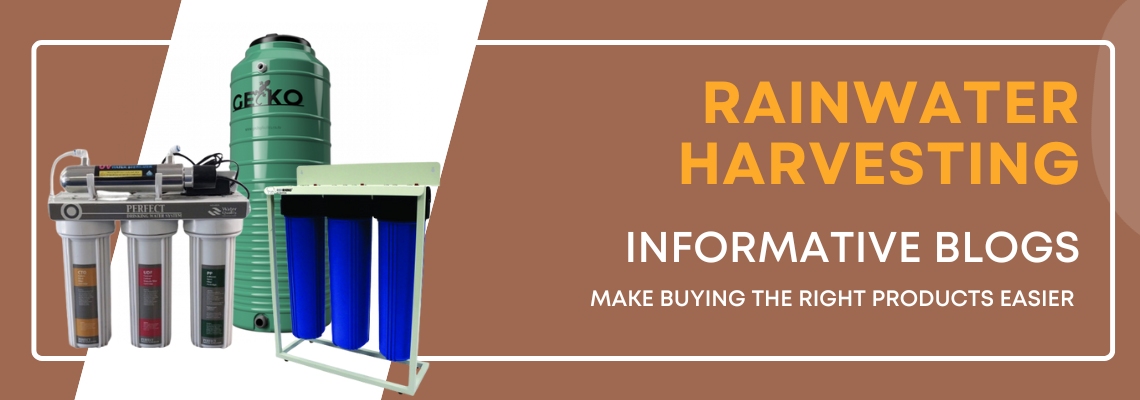Rainwater harvesting in South Africa | Product Education | AgBlogs

Rainwater harvesting in South Africa – A sustainable solution for water scarcity
South Africa faces an ongoing challenge with water scarcity
due to a combination of factors. These factors include erratic rainfall
patterns due to El Nino and climate change, increasing population demands, as
well as decaying infrastructure.
One easy way to use the resources at hand is to create a
rainwater catchment system. In this blog, we will explore the importance of
rainwater harvesting in South Africa, as well as important aspects to consider.
Here are some of the aspects we will be looking at in this article:
1.
Roofing
2.
Storage Tanks
3.
Filtration system
4.
First Flush Diverter
Most roofing is suitable for rainwater harvesting
with corrugated iron and aluminium roofing being the most efficient, followed
by concrete roofing tiles. Thatched roofing can also be utilised, provided the
thatching is well-maintained and regularly cleaned. If you have any other type
of roofing it might be pertinent to research if your roofing is suitable for
water catchment. Ideally, the material should be non-toxic and free from
contaminants.
The optimal angle of your roof for efficient rainwater
harvesting depends on the type of roofing material and your average regional
rainfall but generally, a roof angle of between 30 to 45 degrees is considered
ideal for maximising rainwater collection.
If you have a flat or low-pitched roof, you can still set up
a rainwater harvesting system, but it may require additional measures such as
installing a steeper slop in your cutters or using a membrane system to channel
water towards collection points and gutters.
Choose the appropriate storage tank based on your
water requirements and available space. The Gecko
Slender water tank range is an excellent choice for rainwater storage in
South Africa. These tanks are designed to fit into narrow spaces, making them a
practical solution for urban environments where space is limited. With a
capacity of 1000 litres, they provide substantial storage for collected
rainwater. The slim profile of these tanks allow for easy installation in
various locations, including alongside buildings or within confined areas.
We’ve found this rainwater
calculation spreadsheet on Wikipedia that can be used to work out the size
of the rainwater catchment system you will need based on the climatological and
usage data you put in.
While rainwater is generally clean, it may still contain
impurities and contaminants. To ensure the collected water is safe for
consumption and other domestic purposes it is essential to add water
filtration systems to your rainwater storage system to catch any unwanted
debris and sediments. Add some mesh screens and sediment filters in the
guttering leading to your water catchment system. It can also be very
beneficial to add something like the 20”
triple big blue water filtration system to your pipes leading to your
potable water in the house. You can also add a UV-light
under your sink to ensure clean and bacteria-free water.
A First Flush Diverter is another essential component
in a rainwater harvesting system. It diverts the initial rainwater flow away
from the collection tank, redirecting it to a separate disposal area. This
system essentially ensures you wash the first debris, dust and pollutants off
the roof before storing the rest of the water in your catchment system ensuring
your water is cleaner and safer.
To create a first flush diverter for your system you can
follow these general steps. It is typically recommended that you divert the
first 10 Liters of water per square meter of roof area. Choose a container,
such as a pipe or plastic drum that can hold the calculated amount of water.
The container should have an inlet for collecting water from the downspout and
an outlet for diverting water away from the storage tank. Connect an overflow
pipe or hose to the top of the diverter container. This will allow excess water
to bypass the diverter and continue down the downspout once the container is
full. To prevent the collected water from flowing back into the downspout, you
can install a floating ball or valve mechanism inside the diverter container,
creating a sea once the container reaches its capacity.
Rainwater harvesting offers an effective and sustainable
solution to South Africa’s water scarcity challenges. Choosing the right
elements for your catchment system are essential step to ensure the safety and
reliability of collected rainwater. Embracing rainwater harvesting not only
conserves freshwater resources but also contributes to a more water–secure and
sustainable future in South Africa.

